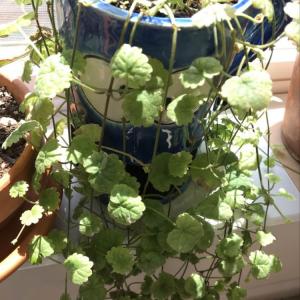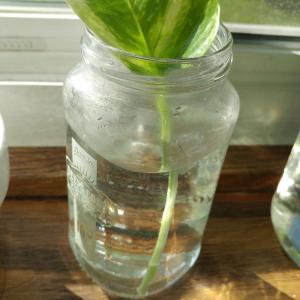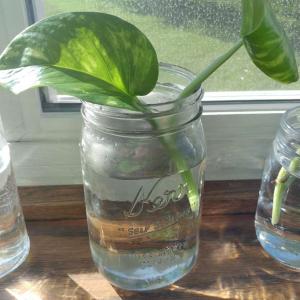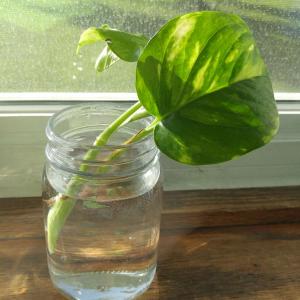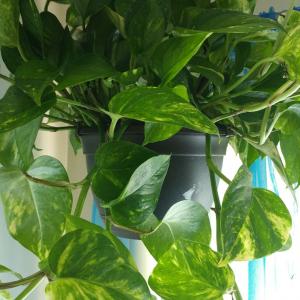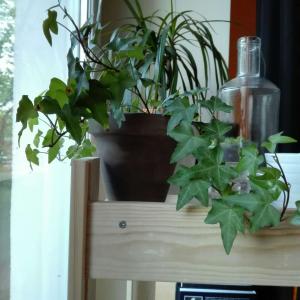文章
Dummer. ゛☀
2017年08月13日

Ivy can make a wonderful, bright light houseplant. It can grow long and lush and bring a bit of the outdoors inside. Growing ivy indoors is easy as long as you know what makes an ivy plant happy. Let’s learn a little bit more about ivy and proper ivy plant care.
About Ivy Houseplants
Ivy houseplants can actually be one of several different varieties. These include:
English ivy (Hedera helix)
Irish ivy (Hedera hibernica)
Japanese ivy (Hedera rhombea)
Algerian ivy (Hedera canariensis)
Persian ivy (Hedera colchica)
Nepal ivy (Hedera nepalensis)
Russian ivy (Hedera pastuchovii)
English ivy cultivars are the most common type of ivy grown in the home, but all can be found if you look hard enough. Each of the varieties of inside ivy plants also come in several different cultivars. This means that there is a dizzying array of ivies that you can choose for your home, depending on your preference for color (all shades of green or variegated with white, yellow, gray, black and cream), leaf shape and growth habits.
Growing Ivy Indoors
Growing ivy indoors isn’t difficult as long as you provide what the plant needs. The most important part of indoor ivy plant care is light. All true ivies need bright light. Variegated cultivars can take medium light, but be aware that their variegation will become less pronounced in less light. Without enough light, inside ivy plants will become leggy and sickly looking. They will also be more prone to pests.
Indoor Ivy Plant Care
When watering your ivy, always check the soil before adding water. Ivies prefer to be kept slightly on the dry side, so let the soil dry out some (dry to the touch on top) before you water your ivy plant again. Also, make sure that your plant has excellent drainage, as ivy does not like to be in standing water or overly wet soil. Caring for ivy plants should also include regular fertilizing. Fertilize your ivy about once a month in the spring, summer and fall with a water soluble, nitrogen-rich fertilizer. Do not fertilize in the winter, as this is the ivy’s dormant period and the fertilizer may do more harm than good at this time. Ivy houseplants benefit from periodic washing to remove dust and pests from their leaves. To wash your ivy plant, simply place the plant in the shower and allow the water to run over the plant for a few minutes. If you find the plant has a serious pest infestation, you may need to bring the spray closer to the plant to help knock off all the pests. Caring for ivy plants is easy and rewarding. You will enjoy not only growing ivy indoors, but will also have fun with the wide selection of ivy plants available to do so.

About Ivy Houseplants
Ivy houseplants can actually be one of several different varieties. These include:
English ivy (Hedera helix)
Irish ivy (Hedera hibernica)
Japanese ivy (Hedera rhombea)
Algerian ivy (Hedera canariensis)
Persian ivy (Hedera colchica)
Nepal ivy (Hedera nepalensis)
Russian ivy (Hedera pastuchovii)
English ivy cultivars are the most common type of ivy grown in the home, but all can be found if you look hard enough. Each of the varieties of inside ivy plants also come in several different cultivars. This means that there is a dizzying array of ivies that you can choose for your home, depending on your preference for color (all shades of green or variegated with white, yellow, gray, black and cream), leaf shape and growth habits.

Growing Ivy Indoors
Growing ivy indoors isn’t difficult as long as you provide what the plant needs. The most important part of indoor ivy plant care is light. All true ivies need bright light. Variegated cultivars can take medium light, but be aware that their variegation will become less pronounced in less light. Without enough light, inside ivy plants will become leggy and sickly looking. They will also be more prone to pests.

Indoor Ivy Plant Care
When watering your ivy, always check the soil before adding water. Ivies prefer to be kept slightly on the dry side, so let the soil dry out some (dry to the touch on top) before you water your ivy plant again. Also, make sure that your plant has excellent drainage, as ivy does not like to be in standing water or overly wet soil. Caring for ivy plants should also include regular fertilizing. Fertilize your ivy about once a month in the spring, summer and fall with a water soluble, nitrogen-rich fertilizer. Do not fertilize in the winter, as this is the ivy’s dormant period and the fertilizer may do more harm than good at this time. Ivy houseplants benefit from periodic washing to remove dust and pests from their leaves. To wash your ivy plant, simply place the plant in the shower and allow the water to run over the plant for a few minutes. If you find the plant has a serious pest infestation, you may need to bring the spray closer to the plant to help knock off all the pests. Caring for ivy plants is easy and rewarding. You will enjoy not only growing ivy indoors, but will also have fun with the wide selection of ivy plants available to do so.
0
0
文章
Dummer. ゛☀
2017年08月13日

Grape ivy, or Cissus rhombifolia, is a member of the grape family and in form resembles other ornamental vines that share the name “ivy”. Consisting of about 350 species of subtropical to tropical species, Cissus rhombifolia is one of the most tolerant of indoor growing conditions. Grape ivy growing is most suited to use as an indoor hanging plant due to its native habitat in tropical Venezuela, where one will find grape ivy growing in a cascading or trailing profusion of vines up to 10 feet long. Grape ivy in the home is tolerant of low light exposure, medium heat and low water requirements.
How to Care for Grape Ivy Houseplant
Caring for grape ivy is a lesson in less is more. These plants do not care for temperatures over 80 F. (27 C.), especially those into the 90s (32 C.). When growing grape ivy plants, maintaining temperatures between 68-82 F. (10-28 C.) is crucial in how to care for grape ivy houseplants. Temperatures over or under this range tend to repress the growth of the long runners of this beautiful hanging plant. As mentioned above, when caring for grape ivy, a low light exposure is most advantageous, although grape ivy can tolerate bright to moderate light if kept sufficiently moist. Allow soil of grape ivy to dry slightly between waterings, taking care not to over irrigate.
Soil considerations when growing grape ivy are important as the root systems require excellent aeration. A potting mixture of peat combined with particles such as bark, perlite, Styrofoam and calcined clay, is the best medium in how to care for grape ivy houseplants. This potting mixture will aid in water retention and yet, allow for excellent drainage. If utilizing an acidic peat when grape ivy growing, adjust the soil pH with an addition of dolomitic limestone (dolomite) to bring it into the range of 5.5-6.2. Grape ivy plants are lovely hanging plants with rhombus shaped leaves (whence the name harkens) with long stems that are of a reddish hue on the underside. To maintain this color and flourishing growth, caring for grape ivy requires a consistent liquid fertilizer program. However, no amount of feeding of the grape ivy houseplant will encourage significant flowering. The blooms of this plant tend to be an innocuous green similar to the leaf color, blending into the foliage and rarely found on cultivated plants.
Pruning Grape Ivy Plants
Grape ivy growing allows for easy propagation of the plant from root cuttings obtained when pinching back the plant. Pinching back or pruning grape ivy plants also produces denser, healthier foliage. Trim ¼ inch above the point of the leaf attachment and ¾ to 1 ¼ inch below the node when pruning these plants. After pruning grape ivy plants, the cutting will form a callus-like layer from whence the new roots will form. A rooting hormone may be applied to the cutting to encourage this root formation.
Grape Ivy Growing Problems
Grape ivy is susceptible to a few pests and problems such as leaf spot, mildew issues, mealybugs, spider mites, scales, and thrips. Most of these stem from the grower’s greenhouse and can be combated with an insecticide. Fungus, mildew and leaf drop may be the result of overly wet or dry conditions.

How to Care for Grape Ivy Houseplant
Caring for grape ivy is a lesson in less is more. These plants do not care for temperatures over 80 F. (27 C.), especially those into the 90s (32 C.). When growing grape ivy plants, maintaining temperatures between 68-82 F. (10-28 C.) is crucial in how to care for grape ivy houseplants. Temperatures over or under this range tend to repress the growth of the long runners of this beautiful hanging plant. As mentioned above, when caring for grape ivy, a low light exposure is most advantageous, although grape ivy can tolerate bright to moderate light if kept sufficiently moist. Allow soil of grape ivy to dry slightly between waterings, taking care not to over irrigate.
Soil considerations when growing grape ivy are important as the root systems require excellent aeration. A potting mixture of peat combined with particles such as bark, perlite, Styrofoam and calcined clay, is the best medium in how to care for grape ivy houseplants. This potting mixture will aid in water retention and yet, allow for excellent drainage. If utilizing an acidic peat when grape ivy growing, adjust the soil pH with an addition of dolomitic limestone (dolomite) to bring it into the range of 5.5-6.2. Grape ivy plants are lovely hanging plants with rhombus shaped leaves (whence the name harkens) with long stems that are of a reddish hue on the underside. To maintain this color and flourishing growth, caring for grape ivy requires a consistent liquid fertilizer program. However, no amount of feeding of the grape ivy houseplant will encourage significant flowering. The blooms of this plant tend to be an innocuous green similar to the leaf color, blending into the foliage and rarely found on cultivated plants.

Pruning Grape Ivy Plants
Grape ivy growing allows for easy propagation of the plant from root cuttings obtained when pinching back the plant. Pinching back or pruning grape ivy plants also produces denser, healthier foliage. Trim ¼ inch above the point of the leaf attachment and ¾ to 1 ¼ inch below the node when pruning these plants. After pruning grape ivy plants, the cutting will form a callus-like layer from whence the new roots will form. A rooting hormone may be applied to the cutting to encourage this root formation.

Grape Ivy Growing Problems
Grape ivy is susceptible to a few pests and problems such as leaf spot, mildew issues, mealybugs, spider mites, scales, and thrips. Most of these stem from the grower’s greenhouse and can be combated with an insecticide. Fungus, mildew and leaf drop may be the result of overly wet or dry conditions.
0
0
文章
Dummer. ゛☀
2017年08月13日

Gardeners who have an ugly wall or underused vertical space may want to try growing Arizona grape ivy. What is Arizona grape ivy? This attractive, ornamental vine can get between 15 and 30 feet in height and self-attaches with small tendrils that bear suction cups on the ends. These “feet” cement themselves to structures and can be damaging if removal is necessary. In some zones, this plant is considered invasive so check with your local extension office before purchase. Otherwise, throw caution to the wind and check out Arizona grape ivy plants (Cissus trifoliata).
What is Arizona Grape Ivy?
Vertical spaces with green vines spilling over them accent the garden and lend lushness that bare wall or trellis simply can’t fake. Arizona grape ivy plants are fast growing, easy care vines with tiny flowers and pretty lobed leaves. They are mostly herbaceous but develop a woody base and numerous stems. Another name for the plant is possum grape vine.
Those of us not from Mexico or the American South may wonder, what are Arizona grape ivy plants? This North American native is a fast-growing vine that climbs into trees in its wild range. The plant is remarkably adaptable to almost any lighting because of its nature as an understory tree. In the wild, the tree starts life either in a sunny clearing or in a crowded forest with no light. As the plant grows upward, it reaches brighter and brighter conditions. In cultivation, the vine thrives in partial to full sun or even shade. In its habitat, the plant grows in stream banks, rocky ravines, and roadsides.
Possum Grape Vine Info
Possum or grape ivy is a hardy, herbaceous vine. It has three-lobed rubbery leaves nearly 4 inches long with grayish green color. The plant produces 2-inch wide small greenish flat clusters of blooms which become tiny, grape-like fruits. These are green but mature to a rich bluish black. The stems have tendrils which coil around any object to help pull the plant up as it grows. Reportedly, the leaves produce a rather nasty odor when crushed. The plant is attractive to bees and butterflies. Birds eat the fruits. Basic possum grape vine info must include the fact that the plant is semi-evergreen. In warmer climates, the plant tends to keep its leaves, but in temperate zones it will drop leaves in fall.
Growing Arizona Grape Ivy
This is one of the easiest plants to grow and is suitable for USDA hardiness zones 6 to 11. Once established, care of Arizona grape ivy is negligible. Choose a well-drained site where soil has been loosened and amended with compost or other organic material. The plant can tolerate either acidic to mildly alkaline soil. Provide a vertical structure for support as the plant grows and help it along at the beginning with plant ties. Possum vine is drought tolerant and resistant to deer, but it will need water during establishment. It also self-sows, so you may wish to remove the seed heads before they ripen. Care of Arizona grape ivy may require occasional pruning to keep the plant in habit.

What is Arizona Grape Ivy?
Vertical spaces with green vines spilling over them accent the garden and lend lushness that bare wall or trellis simply can’t fake. Arizona grape ivy plants are fast growing, easy care vines with tiny flowers and pretty lobed leaves. They are mostly herbaceous but develop a woody base and numerous stems. Another name for the plant is possum grape vine.
Those of us not from Mexico or the American South may wonder, what are Arizona grape ivy plants? This North American native is a fast-growing vine that climbs into trees in its wild range. The plant is remarkably adaptable to almost any lighting because of its nature as an understory tree. In the wild, the tree starts life either in a sunny clearing or in a crowded forest with no light. As the plant grows upward, it reaches brighter and brighter conditions. In cultivation, the vine thrives in partial to full sun or even shade. In its habitat, the plant grows in stream banks, rocky ravines, and roadsides.

Possum Grape Vine Info
Possum or grape ivy is a hardy, herbaceous vine. It has three-lobed rubbery leaves nearly 4 inches long with grayish green color. The plant produces 2-inch wide small greenish flat clusters of blooms which become tiny, grape-like fruits. These are green but mature to a rich bluish black. The stems have tendrils which coil around any object to help pull the plant up as it grows. Reportedly, the leaves produce a rather nasty odor when crushed. The plant is attractive to bees and butterflies. Birds eat the fruits. Basic possum grape vine info must include the fact that the plant is semi-evergreen. In warmer climates, the plant tends to keep its leaves, but in temperate zones it will drop leaves in fall.

Growing Arizona Grape Ivy
This is one of the easiest plants to grow and is suitable for USDA hardiness zones 6 to 11. Once established, care of Arizona grape ivy is negligible. Choose a well-drained site where soil has been loosened and amended with compost or other organic material. The plant can tolerate either acidic to mildly alkaline soil. Provide a vertical structure for support as the plant grows and help it along at the beginning with plant ties. Possum vine is drought tolerant and resistant to deer, but it will need water during establishment. It also self-sows, so you may wish to remove the seed heads before they ripen. Care of Arizona grape ivy may require occasional pruning to keep the plant in habit.
0
0
文章
Dummer. ゛☀
2017年08月13日

Grape ivy is one of the finest indoor vines a gardener can grow. It’s hardy, looks nice and springs back despite a great deal of neglect. Because of this, many people are surprised to hear about grape ivy plant problems, but they do suffer a few. Yellow leaves on grape ivy are by far the most common and can be caused by a couple of different mechanisms. Read on to learn more about grape ivy with yellow leaves.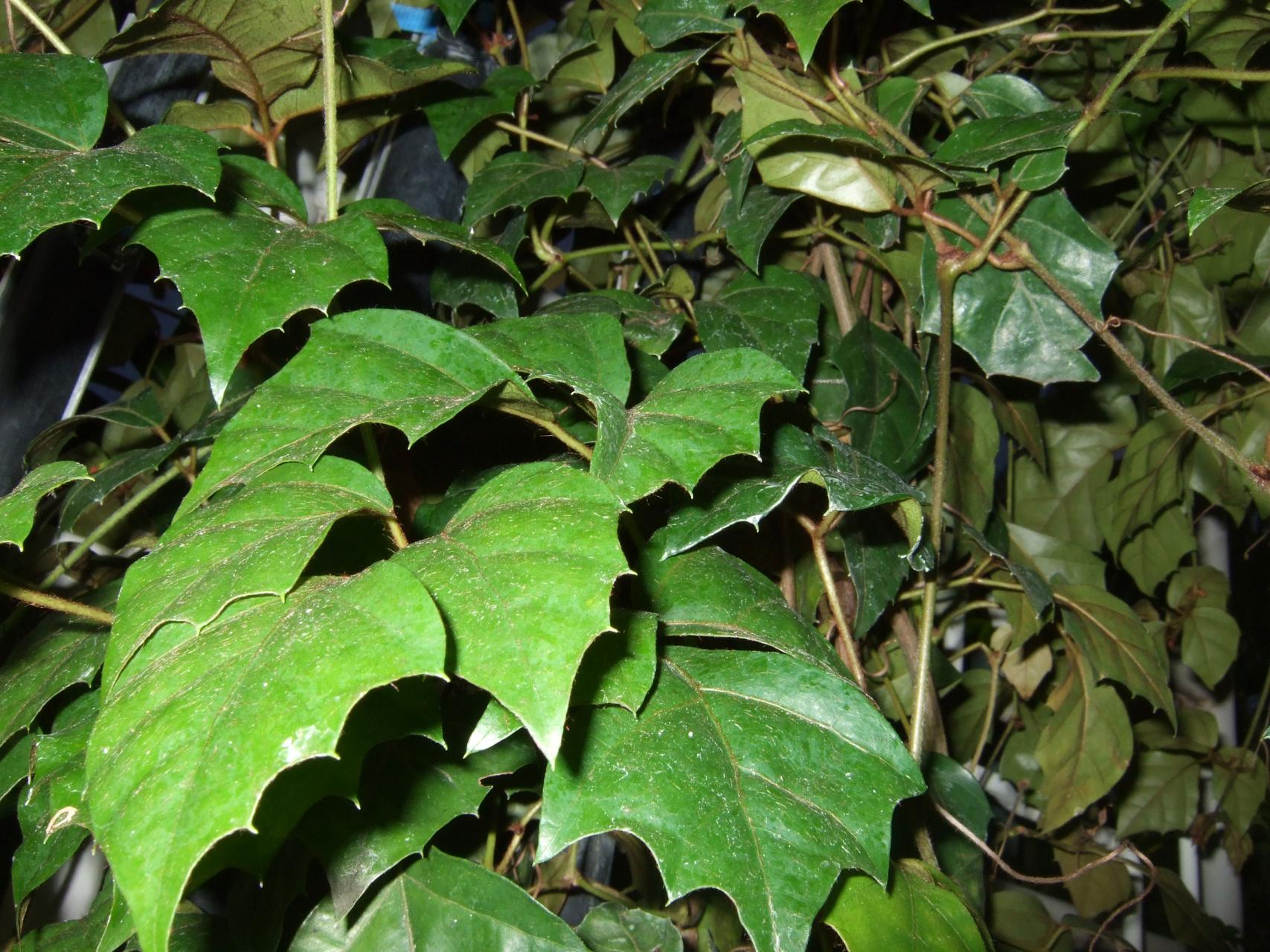
0Causes of Yellow Grape Ivy
When your grape ivy is turning yellow, you may be really concerned that it won’t survive the ordeal – and you may be right. Although there’s not much that can get these hardy plants down, yellow leaves can be a sign of serious distress. It’s time to do a little detective work to find out what’s causing your plant’s problem. By far, the two most common causes of yellow leaves on grape ivy are spider mites and root rot. Both are treatable if caught early. Here’s what to watch for and what to do if you find it:
Spider Mites. Spider mites leave a characteristic thin spider-like web on your plants, along with pin-sized yellow spots on leaves that aren’t fully affected yet. If you suspect spider mites, washing the plant thoroughly once a week and increasing the humidity around it can help keep them at bay. If they’re persistent, a miticide is in order. Apply it carefully, and per the package instructions.
Root Rot. Root rot is the direct result of overwatering. In a plant like grape ivy, which prefers a dry soil, root rot can be a serious problem long before you realize. It can manifest in several ways, but yellow or wilting leaves are typical signs that your plant’s roots aren’t doing their job.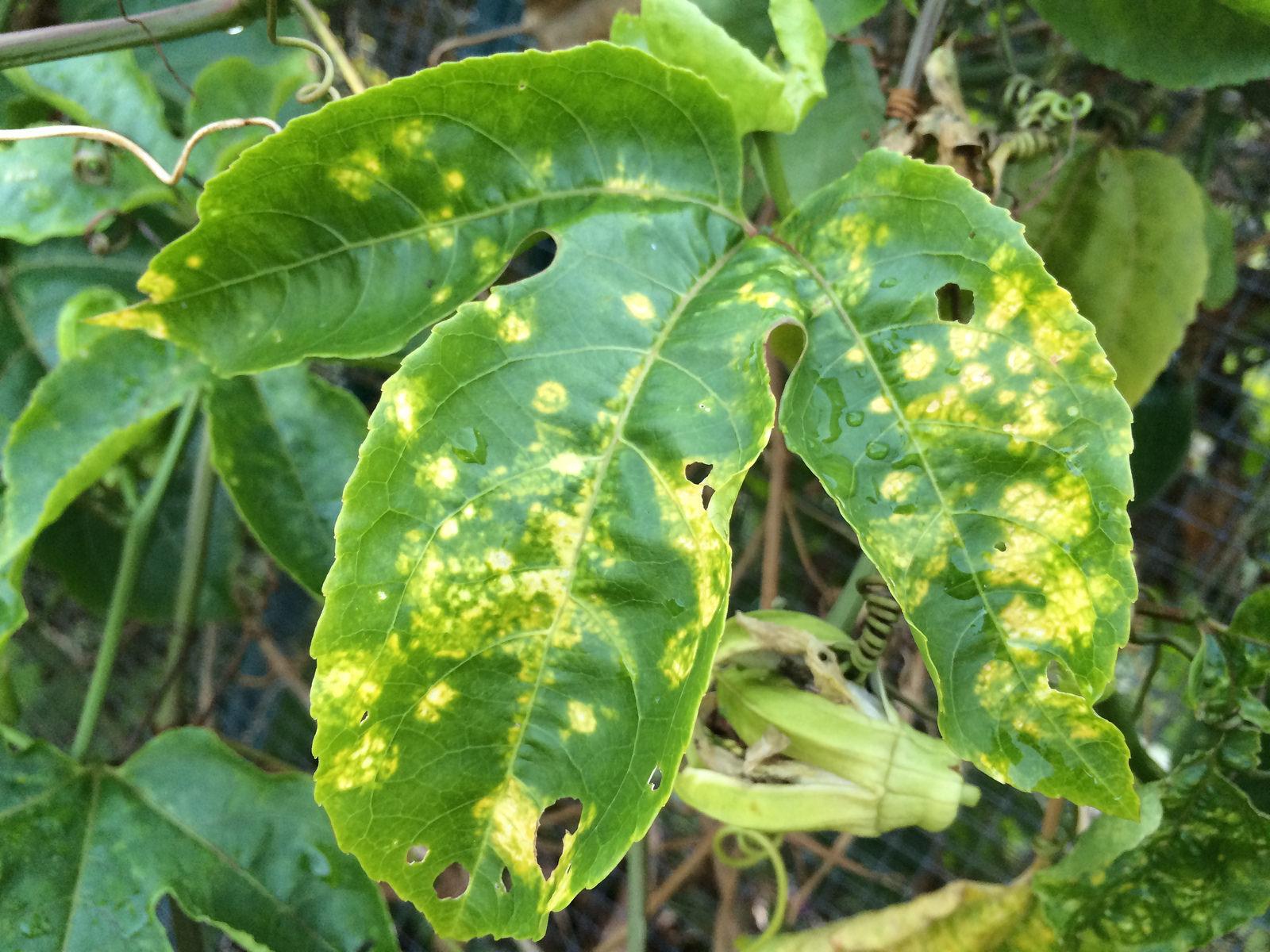
Remove the plant from its pot and clean the dirt out of the root ball gently. If many of the roots are brown, black, smell terrible or appear dead, you’ve got a problem. Trim back all the sickly roots and repot your plant into a container that drains quickly. Make sure to use a fast-draining potting soil, such as a palm or cactus mix. Water the plant when the soil feels dry and never leave it standing in a saucer full of water.

0Causes of Yellow Grape Ivy
When your grape ivy is turning yellow, you may be really concerned that it won’t survive the ordeal – and you may be right. Although there’s not much that can get these hardy plants down, yellow leaves can be a sign of serious distress. It’s time to do a little detective work to find out what’s causing your plant’s problem. By far, the two most common causes of yellow leaves on grape ivy are spider mites and root rot. Both are treatable if caught early. Here’s what to watch for and what to do if you find it:
Spider Mites. Spider mites leave a characteristic thin spider-like web on your plants, along with pin-sized yellow spots on leaves that aren’t fully affected yet. If you suspect spider mites, washing the plant thoroughly once a week and increasing the humidity around it can help keep them at bay. If they’re persistent, a miticide is in order. Apply it carefully, and per the package instructions.

Root Rot. Root rot is the direct result of overwatering. In a plant like grape ivy, which prefers a dry soil, root rot can be a serious problem long before you realize. It can manifest in several ways, but yellow or wilting leaves are typical signs that your plant’s roots aren’t doing their job.

Remove the plant from its pot and clean the dirt out of the root ball gently. If many of the roots are brown, black, smell terrible or appear dead, you’ve got a problem. Trim back all the sickly roots and repot your plant into a container that drains quickly. Make sure to use a fast-draining potting soil, such as a palm or cactus mix. Water the plant when the soil feels dry and never leave it standing in a saucer full of water.
0
0
文章
Dummer. ゛☀
2017年08月10日

Although an introduced alien species, Ivy-leaved Toadflax has had nearly 400 years to make itself at home in Britain and Ireland, and few people are aware that it is not a truly native wildflower.Identification
This trailing hairless perennial plant has lilac two-lipped flowers with two yellowish bulges on the lower lip. Its curved spur is unusually short for a toadflax. Flowers are 9 to 15mm across and each is borne on a long stalk growing from a leaf base.
It is easy to see how this plant spreads so rapidly: the fruit capsules develop on long stalks that gradually recurve towards the growing substrate and tuck their oval seeds into any likely places where the plant can get new toe-holds.The long-stalked leaves of Ivy-leaved Toadflax are palmate (sometimes but not always shaped rather like the leaves of Ivy!) with 3 to 7 lobes and ranging between 2.5 and 5cm across. Leaves alternate along the thin creeping red-flushed stems, which root at nodes whenever they find a suitable crevice. It seems meaningless to discus the 'height' of a plant that is equally at home on vertical and horizontal surfaces, but Cymbalaria muralis is low growing and the flowers are rarely more than 10cm away from the substrate.
Distribution
Native to the Mediterranean region and thought to have been brought to London with imported marble slabs from Italy in 1640, Ivy-leaved Toadflax was planted in gardens and has since escaped and become naturalised and very common throughout Britain and Ireland except for some parts of northern Scotland.Now very common throughout most of northern, central and southern Europe, Cymbalaria muralis has also become naturalised in many other parts of the world including North America, where its invasive qualities have resulted in a widespread distribution.
Habitat
Cymbalaria muralis is mainly found growing in and over walls, piles of rubble and similar places where its roots can get a grip in sparse soil that does not remain wet long enough for other plants to take over.
Blooming Times
The first flowers of Ivy-leaved Toadflax usually appear April and continue through to at least the end of September. In sheltered southern locations flowers can be seen all year round except in the harshest of winters.
Uses
Bare walls are made more attractive when colonised by Ivy-leaved Toadflax, but it is rarely necessary to plant these wildflowers because seeds, complete with a starter-pack of organic growing medium, are usually delivered by birds. The fruits are capsule-shaped which grow on long stalks that gradually recurve towards and into a likely place where the plant can get a new 'toe-hold'. Bees gather nectar from the flowers, and in so doing they contribute to pollination.
This trailing hairless perennial plant has lilac two-lipped flowers with two yellowish bulges on the lower lip. Its curved spur is unusually short for a toadflax. Flowers are 9 to 15mm across and each is borne on a long stalk growing from a leaf base.
It is easy to see how this plant spreads so rapidly: the fruit capsules develop on long stalks that gradually recurve towards the growing substrate and tuck their oval seeds into any likely places where the plant can get new toe-holds.The long-stalked leaves of Ivy-leaved Toadflax are palmate (sometimes but not always shaped rather like the leaves of Ivy!) with 3 to 7 lobes and ranging between 2.5 and 5cm across. Leaves alternate along the thin creeping red-flushed stems, which root at nodes whenever they find a suitable crevice. It seems meaningless to discus the 'height' of a plant that is equally at home on vertical and horizontal surfaces, but Cymbalaria muralis is low growing and the flowers are rarely more than 10cm away from the substrate.
Distribution
Native to the Mediterranean region and thought to have been brought to London with imported marble slabs from Italy in 1640, Ivy-leaved Toadflax was planted in gardens and has since escaped and become naturalised and very common throughout Britain and Ireland except for some parts of northern Scotland.Now very common throughout most of northern, central and southern Europe, Cymbalaria muralis has also become naturalised in many other parts of the world including North America, where its invasive qualities have resulted in a widespread distribution.
Habitat
Cymbalaria muralis is mainly found growing in and over walls, piles of rubble and similar places where its roots can get a grip in sparse soil that does not remain wet long enough for other plants to take over.
Blooming Times
The first flowers of Ivy-leaved Toadflax usually appear April and continue through to at least the end of September. In sheltered southern locations flowers can be seen all year round except in the harshest of winters.
Uses
Bare walls are made more attractive when colonised by Ivy-leaved Toadflax, but it is rarely necessary to plant these wildflowers because seeds, complete with a starter-pack of organic growing medium, are usually delivered by birds. The fruits are capsule-shaped which grow on long stalks that gradually recurve towards and into a likely place where the plant can get a new 'toe-hold'. Bees gather nectar from the flowers, and in so doing they contribute to pollination.
0
0
文章
笼岛 みどり
2017年05月27日


花の名前は知っていても、なかなか知られていない花言葉。その中から素敵な意味を持つ花言葉をご紹介します!

アイビー(Ivy)
花言葉は「永遠の愛」「友情」「不滅」「結婚」「誠実」。
アイビーが他の樹木、岩、石垣などにしっかりつかまって成長することに由来します。
アイビーの花言葉についての記事はこちら。アイビー(ヘデラ)|花言葉・由来・意味
エーデルワイス(Edelweiss)
花言葉は「大切な思い出」「勇気」。
天使に恋をした登山家の言い伝えにちなむともいわれます。
エーデルワイスの花言葉についての記事はこちら。エーデルワイス|花言葉・由来・意味
オリーブ(Olive)
花言葉は「平和」「知恵」。
花言葉の「平和」は、ノアの方舟の物語からきているといわれています。また、「知恵」の花言葉は、ギリシア神話でアテネがオリーブの木を植えたことに由来するともいわれています。
ガーベラ (Gerbera)
花言葉は「希望」「常に前進」。
ピンクやオレンジといった明るい色の花を咲かせ、陽気な雰囲気を醸し出すその花姿に由来するといわれます。
ガーベラの花言葉についての記事はこちら。ガーベラ|花言葉・由来・意味
カモミール (Chamomile)

花言葉は「逆境に耐える」「苦難の中の力」。
カモミール(カミツレ)が地面をはうように生え、踏まれれば踏まれるほど丈夫に育つことに由来します。
カモミール(カミツレ)の花言葉についての記事はこちらカモミール(カミツレ)|花言葉・由来・意味
カランコエ (Kalanchoe)

花言葉は「幸福を告げる」「たくさんの小さな思い出」「あなたを守る」「おおらかな心」。
カランコエの花言葉についての記事はこちら。カランコエ|花言葉・由来・意味
クローバー (Clover)

花言葉は「私を思って」「幸運」「約束」。
三つの葉のひとつひとつが希望、信仰、愛情のシンボルとされてふぃて、四つ目の葉は幸福や幸運のシンボルといわれています。そこから「幸運」という花言葉がつけられたといわれています。
クローバーの花言葉についての記事はこちら。クローバー(シロツメクサ)|花言葉・由来・意味
スズラン (Lily of the valley)

花言葉は「再び幸せが訪れる」「純粋」「純潔」「謙遜」。
「再び幸せが訪れる」という花言葉は、北国の人々にとって鈴蘭が春の訪れの喜びのしるしになっていることに由来します。また、ヨーロッパでは古くから聖母マリアの花とされています。そこから「純粋」「純潔」という花言葉となったようです。
スズランの花言葉についての記事はこちら。鈴蘭(すずらん)|花言葉・由来・意味
チューリップ (Tulip)
0
0








